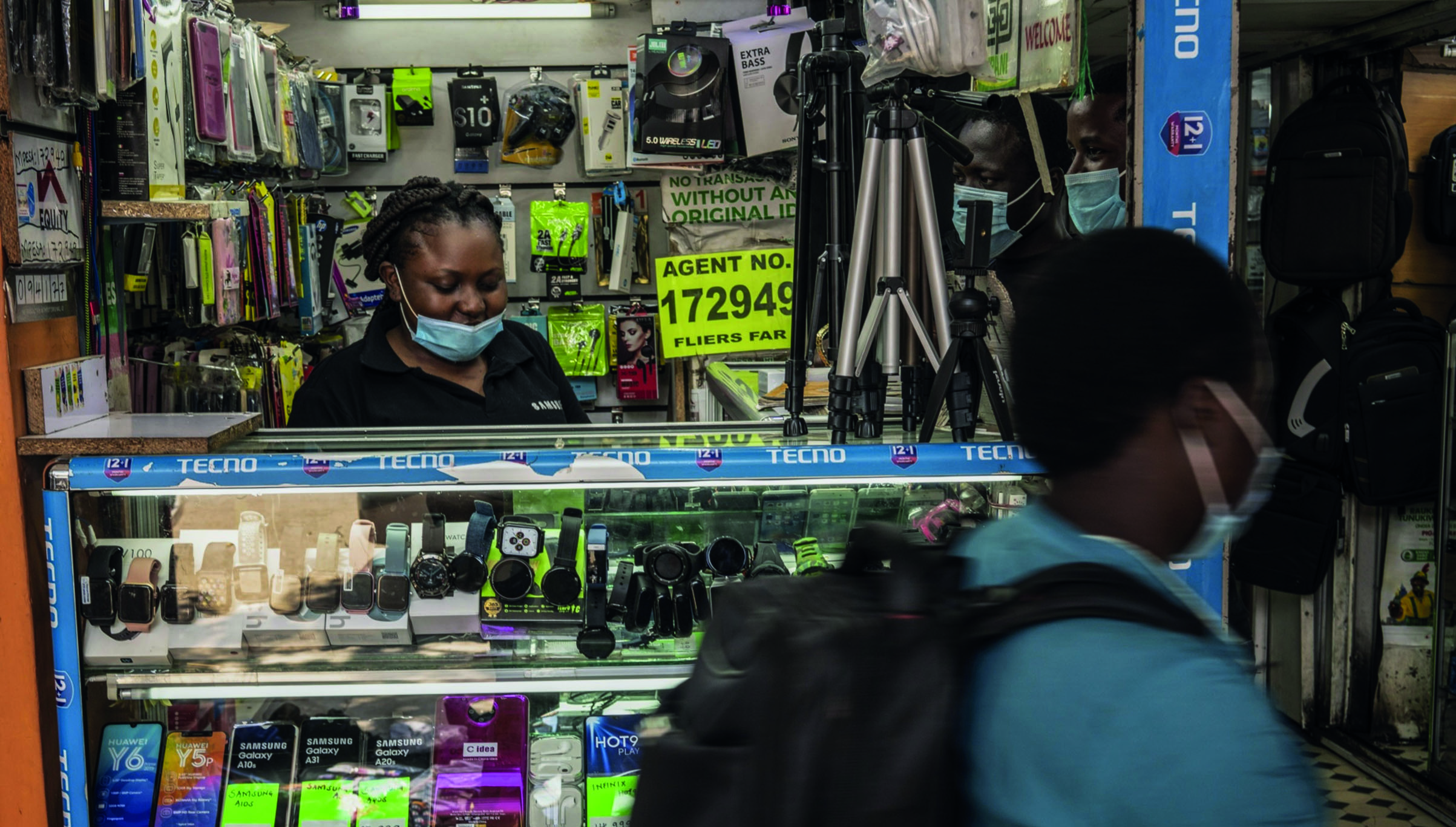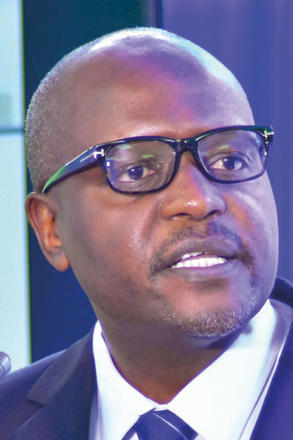
The east African country’s economic bounceback has been dampened by a Covid-19 surge, but a swift recovery is anticipated once lockdown restrictions are lifted.
Kenya was expected to make one of the strongest economic recoveries in Africa this year after the pandemic, but the government’s latest Covid-19-related social restrictions could severely dampen its economic prospects.
The International Monetary Fund (IMF) estimates that the country had almost zero economic growth last year, but in February it forecast that Kenya’s economy would rebound by an impressive 7.6% in 2021, which would have been one of the fastest expansion rates in Africa. However, on March 26, president Uhuru Kenyatta put the capital, Nairobi, and the surrounding four counties under lockdown restrictions again because of the high infection rate in the region (six in 10 people in Nairobi were testing positive at the end of March).
The containment measures included a longer night-time curfew and a ban on movement into and out of the high-risk areas. By the end of March, the country had recorded 125,000 coronavirus cases and 2100 deaths. Economists — both at the IMF and elsewhere — may well have to revise down their growth estimates in light of the latest measures.
The latest containment measures will most definitely have an impact
“At the start of January, many Kenyans were expecting a gradual return to some semblance of normality and were a lot more optimistic about the first quarter,” says Kariuki Ngari, chief executive at Standard Chartered Bank Kenya, which was forecasting 5.7% economic growth this year. “Business momentum was starting to accelerate again. However, the latest containment measures will most definitely have an impact; the magnitude will depend on how long they endure. At the moment, it is too soon for us to revise down our growth forecast this year.”
Infrastructure ambitions
With a gross domestic product (GDP) of $105.6bn — or $260bn when adjusted for purchasing power parity — Kenya has the biggest economy in east Africa, according to the IMF. This year, it has a population of 49.8 million people and an estimated income of $2122 per capita per year, compared with $2208 in Nigeria and $5235 in South Africa.
Kenya became a middle-income country (defined by the World Bank as income per capita between $1,036 and $4,045) in 2014. Over the 2015–2019 period, its economic growth averaged 5.7% per year, making it one of the fastest-growing economies in sub-Saharan Africa, according to the World Bank. Under the Kenya Vision 2030 programme launched in 2008, the government aims to create “a globally competitive and prosperous country with a high quality of life” by the year 2030.
During the past five years, the nation has had an ambitious infrastructure spending programme; however, it has led to mounting indebtedness. It has provided access to electricity to around 75% of the population in 2018 — the highest in east Africa — up from 36% in 2014, according to Moody’s. The government raised the target of improving household access to safe drinking water from 60% in 2019 to 80% by 2022. It plans to construct 10,000km of new roads to ease urban congestion and facilitate trade between countries.
Key infrastructure projects involving Kenya include the Lamu Port-South Sudan-Ethiopia-Transport Corridor Programme. This mega development is the largest in east Africa, made up of seven separate infrastructure projects, costing a massive $13bn.
The country is also building a 969km standard-gauge, cross-country railway from Mombasa to Malaba at a cost of $9.9bn. The $3.3bn first phase of the project, spanning 472km from Mombasa to Nairobi, has been completed, and phase 2A — the 120km from Nairobi to Naivasha — was constructed at a cost of $1.5bn. The line is expected to extend to Kisumu at a cost of $3.7bn.
The two-lane Nairobi–Mombasa highway is also being converted into a dual carriageway to address the mounting traffic congestion between the two cities, at the cost of $3bn. An estimated 95% of cargo from the seaport of Mombasa is transported via this motorway.
“Kenya’s efforts to revamp its strained transport network appear to be moving forward, as government expenditure and foreign investment have shown strong growth over past years,” says Alice Usanase, associate vice-president, country relations at the Africa Finance Corporation (AFC), a multilateral financial institution.
“While increased competition, ongoing delays among roads and ports projects, and a host of non-tariff barriers pose serious challenges to future expansion, the government’s dedication to improving transportation indicators has already witnessed steady growth in the rail, port, road and maritime segments,” adds Ms Usanase.
The country’s infrastructure financing deficit was estimated at $2.1bn annually in 2018, according to the AFC. The World Bank says that improving infrastructure financing could improve Kenya’s per capita growth rate by three percentage points.
Rising debt
However, all the recent infrastructure spending — combined with debt-management challenges and the pandemic — prompted public debt to surge to 72% of GDP in 2020, up from 61% in 2019, according to the African Development Bank. The IMF now says Kenya is at high risk of debt distress.
The government has continually revised its fiscal deficit targets upwards in recent years because of weak spending controls and overly optimistic revenue projections. Fitch Ratings forecasts the general government fiscal deficit will reach 9% of GDP in the fiscal year ending June 2021. The government’s medium-term fiscal framework, presented in the 2021 Budget Policy Statement on February 15, aims to bring it down to 7.5% of GDP in the 2022 fiscal year and then to below 5% by the 2024 fiscal year. However, Fitch estimates that the 2022 deficit will be around 7.7% and believes the subsequent narrowing will be slower than the budget predicts.
Interest payments on debt as a share of tax revenue doubled between the 2013/2014 fiscal year and the 2019/2020 fiscal year, according to the National Treasury statistics. Over this period, interest payments on domestic debt jumped from about 14% of tax revenues to 23%, while interest on external debt surged from 2% to 9%, partially driven by higher borrowing costs as Kenya gradually took out more commercial external loans. Tax revenue to GDP amounted to 15.9% in 2019, compared with 12.3% in Ghana, according to the World Bank.
“Kenya has one of the most dynamic economies on the continent and will likely continue to grow rapidly, but the economy must transition from a public- to private-led growth model to rein in large fiscal and external imbalances, and to prevent Kenya’s endemically large twin deficits from pushing the economy over the edge,” says Patrick Curran, senior economist at Tellimer Research.
“While ambitious infrastructure spending should, in theory, boost Kenya’s long-term growth potential and debt servicing capacity, it is unclear if many big ticket projects — like the standard-gauge railway — will actually yield enough benefits to justify their cost,” he adds.
Cautious outlook
At the end of March, Fitch Ratings re-affirmed Kenya’s B+ rating, but revised its outlook to negative. The report says this reflects a track record of strong growth and relative macroeconomic stability. Kenya has a favourable debt structure, with foreign-currency debt making up almost half of government debt, compared with 63% for other B-rated sovereigns. These positive factors are balanced against rising public debt levels, however.
Kenya has one of the most dynamic economies on the continent and will likely continue to grow rapidly
The comparatively low share of foreign currency debt means that the nation has fairly flexible fiscal financing options. For almost two years, it has abandoned expensive commercial debt to cut back on ballooning repayments but, on March 15, the National Treasury said it is considering tapping into the international capital markets with a fourth Eurobond issue in less than seven years. This would help it to pay off part of its debt obligations estimated to reach Ks925bn ($8.6bn) at the close of the current fiscal year (June 30, 2021).
On February 15, the Kenyan government also reached a staff-level agreement with the IMF on a 38-month $2.4bn support programme. Furthermore, the government has said it would like to take part in the G20’s Debt Service Suspension Initiative this year, after not doing so in 2020 for fear that it could stop it from accessing the international capital markets in the future.
Kenya has a historically stable democratic government. It is the most industrialised country in east Africa and has established its position as the regional hub for trade and finance, as well as the natural choice for business entry. Of the 190 countries reviewed, Kenya was ranked in 56th place in the World Bank’s Doing Business 2020 report — an improvement of five positions on the 2019 rankings. In Africa, it is ranked in fourth place behind Mauritius, Rwanda and Morocco.
As long as the nation’s latest Covid-19-related social restrictions do not last long, Kenya is set to make a strong economic recovery this year. However, the government must show greater determination to reduce the debt-to-GDP level and the fiscal deficit in the future.



